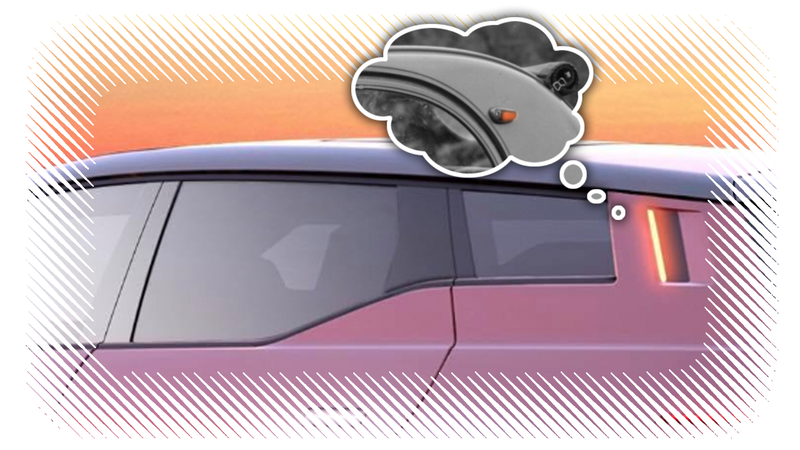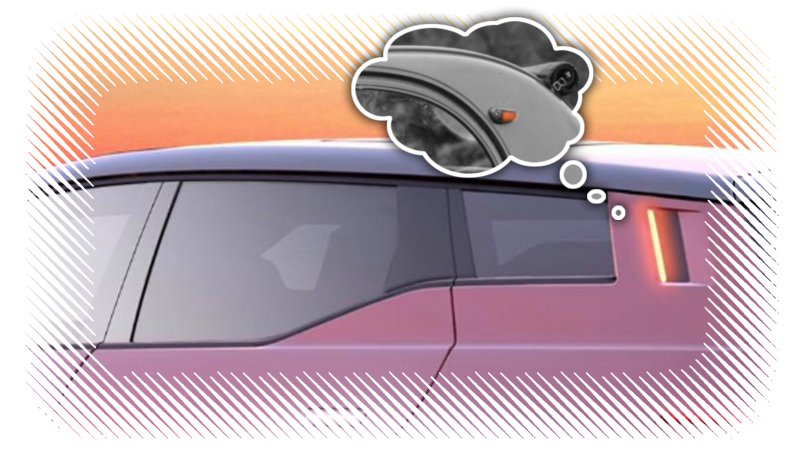
You might recall that noted designer of the BMW Z8 and Aston Martin V8 Vantage, Henrik Fisker, is designing a new, all-electric SUV. So far, those of us in the turn-indicator appreciation and admiration communities haven’t had much to capture our attention. Until now.
On Facebook, Fisker showed a teaser image of the new SUV, and focused on a novel turn indicator location and solution. It seems bold and innovative, which it is, but it’s not exactly original: this turn indicator location was in use decades ago.
Here’s the post that kicked all this off:

Advertisement
As you can see, Fisker’s SUV (I like to pretend it’s just a wagon here, sitting lower, but I know that’s just a fantasy) has some interesting design elements, including that dramatic kick-up in the window line from the rear passenger window to the cargo-area window, which cuts off abruptly at the thick D-pillar.
That D-pillar sports a novel vertical rear turn indicator, which seems to be scalloped out for visibility at the rear and sides of the car, which is, of course, great for safety reasons.
Advertisement
While this feels new now, the truth is the rear pillar of a car has been a location for unorthodox indicator locations since at least the 1940s. Perhaps the best-known example of this is the Citroën 2CV, which wore its indicators on its rearmost pillar, in this case, the C-pillar:

Advertisement
The 2CV had this setup from 1948 to (I think) 1970, though I don’t think the major motive for this indicator arrangement was safety; I think Citroën was trying to make indicators that could be seen from all corners of the car with just two lamps, to keep things cheap. Eventually, they gave in and put indicators on the front fenders and in the taillights, but they rode this method for a good long while.
Now, Fisker isn’t even the first to put indicators on the actual D-pillar, as we’ve had Volvos (and other cars and vans and SUVs) that have been doing this for a while.
Advertisement

Still, an indicator separate from the taillight unit is unexpected, and if it’s a repeater—that is, a double of another indicator at the actual rear of the car, I’m not certain there’s ever been a car with one of those in that location.
Advertisement
So, while it may not be an entirely new indicator innovation, it is absolutely important turn indicator news.













